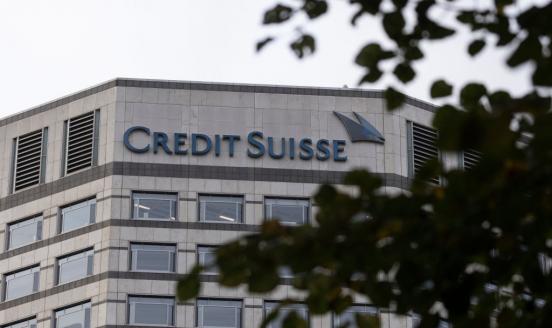Hard times for Italian banks
Silvia Merler and Marcello Minenna review the structure of of the recently adopted Italian guarantees scheme, and look at solutions implemented in oth
Summary
The Italian banking system has had a dramatic few months. Several controversial resolution operations were carried out at the end of 2015, and the new year has opened with market turmoil. This has increased pressure on the Italian government to conclude negotiations on a guarantee scheme for banks’ non-performing loans (NPLs) with the European Commission.
The legal measure establishing this scheme - known as GACS - was signed by the President of Italy this week. We look at the causes of the market's loss of confidence in the Italian banking sector, and review the structure of the Italian guarantees scheme (GACS) in light of solutions that other countries have adopted in response to the same problem.
We argue that there are still several important issues with the scheme, which could jeopardize its activation or prevent it rebooting the NPL securitization market in Italy and properly supporting the banking system.
An effective alternative to GACS would be a securitization scheme based on banks’ gradual disposal of a mix of good and bad loans.
Italy is facing hard times. Although the BTP-Bund spread appears still under control at an altitude of around 150 bps, strong signals highlight market uncertainties. First of all, the collapse of the banks sectorial index (FTSE Italy All Share Banks) has lost about 30% so far this year. The Italian banking system is choked by 350 billion euros of non-performing assets (NPA), almost ¼ of Italian GDP and 4 times the figure for 2008. In addition, about 60% of these NPA are non-performing loans and, therefore, are impaired assets.
The Italian banking system is choked by € 350 bn. of non-performing assets, almost ¼ of GDP and 4 times the figure for 2008.
For a bank-centric country like Italy, this is a very serious problem, not only for the financial system and for the investors but also for the real economy. For years banks have cut off credit to households and businesses, with obvious negative side effects on production and consumption. Added to this are investors' concerns about how bad debt can be managed within the new banking resolution regime, which came into force on 1st January.
Banks’ resolutions of 2015
The two episodes of resolution conducted in 2015 do not set a good precedent. In July 2015, the authorities proceeded with the liquidation of the Bank Romagna Cooperativa (BRC). Although this has gone largely unnoticed abroad, the resolution of the BRC was the first bail-in in Italy.
As it was carried out before 2016, the operation only required a “minimum” bail-in, limited to shareholders and subordinated bondholders; the latter were retrospectively reimbursed by the sectorial guarantee fund.
The subordinated bonds of BRC were wholly owned by small investors. The BRC case has therefore brought to light a problem that is very widespread in the Italian system, where about a third of all bonds issued by banks are held by families: these small investors have little awareness of the risks they are buying into.
A third of all Italian bonds issued by banks are held by families.
The problem became even clearer on 22 November (just over a month before the entry into force of the new European rules on the bail-in), when the government announced it would save 4 regional banks. Depositors and senior bondholders were protected, but shareholders and holders of subordinated notes have lost about four billion and one billion euros respectively.
Moreover, a significant share of these subordinated bonds were sold to retail investors. To limit the bail-in to a minimum and keep the state formally outside the operation, the resolution fund was involved, contributing with 3.6 billion euros.
Funded by contributions of the Italian banks, the resolution fund does not constitute public capital. But since the resolution fund isn’t sufficiently capitalized, three major Italian banks advanced the money. The result is that in order to complete this intervention, it has been decided to “commit” in advance future contributions of the Italian banks to the resolution fund, reducing leeway for the foreseeable future.
The new BRRD framework
The massive ongoing sell-off of banks’ shares is tangible proof that today confidence of operators in Italian banks and in the ability of the Italian authorities to manage these problems is dangerously low.
Under the new BRRD framework, the bail-in should include at least the 8% of the liabilities and can affect shareholders, bondholders (subordinated and perhaps senior) and corporate deposits. The directive provides some possible exceptions: authorities may decide to exclude specific categories of liabilities from the bail-in, if there is a tangible risk of systemic crisis. But in a country where 30% of bank bonds is in the hands of families, even a limited bail-in could have painful effects. Moreover, solutions that discriminate among bondholders (like the one applied in Portugal’s Novo Banco) may increase confusion among investors even further.
Confidence in the ability of the Italian authorities to manage these problems is dangerously low.
It has long been known that this would happen. On August 1, 2013, the European Commission enacted the communication on the banking sector (unanimously agreed by member states) which has de facto integrated the Treaty on the Functioning of the European Union, by establishing the criteria that the Commission would have applied to assess the presence of State aids in the event of bank rescue. Among these criteria there was burden sharing, meaning that state intervention could only take place after the preliminary zeroing of shares and subordinated bonds.
In addition, it is worth recalling that the European agreement on the text of the Bank Recovery and Resolution Directive (BRRD) was reached in December 2013, and therefore two years ago it was already very clear that the Directive (including the new rules on the bail-in) would have entered into force on 1st January 2016. Recent comments from Rome, criticizing the lack of a transition period and calling for the revision of the current regime, are surprising.
The NPL issue in the Eurozone
It’s probably this confused reaction which worries investors. The problem of NPLs is not just an Italian issue. Even at the European level, there are a worrying 1 trillion euros of NPLs, about 9% of Eurozone GDP. However there is an important difference in timing. Apart from a few exceptions (such as Hungary), the other major European economies took measures to counter the problem several years ago.
Most major European economies took measures to counter the problem several years ago.
In some cases interventions came directly from national governments. Germany has provided 240 billion euros to its banks, and another 20 billion euros were bestowed in the form of state guarantees (so-called contingent-liabilities); France also has granted government guarantees to its troubled banks and at times the government has even nationalized some credit institutions (as in the case of BNP).
These countries were able to manage the impact of financial assistance provided to the banks on their public accounts relatively well. For Germany, in particular, the public debt is firmly under control (71% of GDP) and – thanks to an absolutely laughable service cost of debt – the federal budget surplus is nearly 1% of GDP.
Some peripheral countries (Ireland and Spain) have addressed banking system problems by resorting to bad banks co-funded by the state. A bad bank is a kind of “sweeper” that takes over the problematic assets from banks’ balance sheets and raises the funds it needs by issuing Asset-Backed Securities (ABS), split into several tranches with different risk levels: from the riskiest (junior) to that one with an intermediate-risk (mezzanine) up to the safest (senior tranche).
The experiences of the Irish and Spanish Bad Banks: NAMA and SAREB
In Ireland at the end of 2009, the government –after the financial crisis and of the outbreak of the housing bubble – created NAMA (National Asset Management Agency), a bad bank that has bought 74 billion euros of non-performing property development loans to the price of 32 billion euros, using cash from the placement of state-guaranteed bonds.
The impact of this intervention on Irish public debt was devastating, jumping from 42% of GDP in 2008 to 62% in 2009, before reaching the current level of 96% of GDP. The success of this intervention for the private sector is controversial; in the last few years NAMA has reported profits of several hundred million Euros. On the other hand, non-performing loans still represent a very high proportion (nearly 20%) of the total loans disbursed by the Irish banking system.
In August 2012, the Spanish government – pressed by the European institutions calling for the recapitalization of a seriously troubled banking system – created SAREB (Sociedad de Gestión de Activos procedentes de la Reestructuración Bancaria), which it holds 45% through a purposely established Fund (FOBR).
SAREB bought 88 billion euros worth of non-performing real estate loans present in the balance sheets of four banks at a price of around 40 billion euros. The financial coverage came from Europe in the form of EFSF loans (allocated on an ad hoc reserve within the same EFSF) and from the ECB's declaration that it would accept securities issued by the bad bank and guaranteed by the Spanish State. In exchange for this support, the country has been required to implement a strict program of domestic reforms.
GACS: the Italian Bad Banks
The Italian story is different. When the country was hit by the crisis, its sovereign debt was already around 100% of GDP, leaving little room for maneuver to support the banking system. Some interventions have been made, for example through subsidized loans to banks (so-called “Monti-bonds”), or admitting the inclusion of Deferred Tax Credits (DTC) in the capital of the banks. But it was not enough and, unfortunately, the stock of public debt (now equal to 132% of GDP) still significantly limits the alternatives available to the government.
In this context, it is creating an “Italian bad bank” that buys NPLs from the banks and collects the necessary funds by issuing ABSs. Unlike the past experiences of Spain and Ireland (where the transfer of the foreclosed assets took place at a given price preliminarily agreed between political and financial representatives), this project arrives with the European rules on State aids and bail-in now in force. In exchange for the guarantee received, banks will have to pay a remuneration to the State “at market terms”.
Let’s examine in detail the final version of the plan (so-called GACS – Garanzia sulla Cartolarizzazione delle Sofferenze) agreed on January 26 between the Italian Ministry of Finance (Mr. Padoan) and the European Commissioner for Competition (Ms. Vestager).
The idea underlying the provision of a government guarantee is simple: it should provide coverage that allows the gap between the net book value and the market value of the NPLs to be adjusted. This should allow demand and supply of NPLs to intersect, and give banks the opportunity to dispose of many of the impaired assets that are choking their balance sheets, without having to account for further significant credit losses that – given the investigations launched by the European Commission in 2015 about the eligibility of DTC for capital purposes – have no benefits if not in terms of lower taxes. It is evident that these losses cannot disappear, but they will be properly managed over time according to the structuring of the bad bank and its funding.
The overall architecture of the GACS is quite complex due to several reasons.
First, there will not be a single bad bank but many, and each originating bank will have the possibility to activate the state guarantee on-demand. Furthermore, this guarantee will only cover the risks of the senior tranche (the least risky) of the ABSs issued by the bad bank.
This means that the State guarantee will become effective only when the losses on the pool of NPLs that comprise the assets of the bad bank will have already completely eroded the subordinated tranches, first the junior and then the mezzanine (if any).
From the press releases published by the Italian Treasury on 27 and 28 January, it also emerges that the senior tranche will have access to the state guarantee only if preliminarily endowed with an investment-grade rating; those listed in the Press Release are: BBB-, BBB and BBB+. We are therefore talking about notes with a rating in line with that of the Italian Republic (BBB).
There will not be a single bad bank but many, and each originating bank will have the possibility to activate the state guarantee on-demand
Takins into consideration the procedures followed by the rating agencies to assess the various ABS tranches, it is clear that the possession of a rating between BBB- and BBB+ by the senior tranche will be closely linked to the quality of the collateral portfolio and to the thickness of the subordinated tranches.
Suppose, for example, that Italian banks offload the entire stock of gross NPLs present on their balance sheets: 201 billion euros. On average, banks have already written down these gross NPLs by 56%; therefore, the amount of net NPLs involved in the disposal revolves around €89 bn.
In recent months, however, the market has begun to use more conservative estimates in the assessment of bad loans, also in the wake of the haircut applied to NPLs in the four banks resolved last November. The average loss given default expected by the market on the same assets, however, is close to 80%. In other words, the market value of the same portfolio of gross NPLs revolves around €40 bn. Therefore there is a gap of about €50 bn. between book value and market value.
With these numbers, the quickest way to get a rating on senior notes in line with the conditions established by the Italian Treasury is to opt for a capital structure of the ABS in which the overall thickness of the junior tranche (and of the mezzanine one, if any) amounts to at least 50 billion euros.
However, despite being the most immediate, this solution presents a number of unknowns related to the placement of the subordinated tranches and to the fairness of the price paid by the banks for the state guarantee. These unknowns could jeopardize the effective ability of the State guarantee to achieve its goals.
GACS: Some issues
One issue concerns the appeal of the junior tranches of the securitised loans. In order to understand better, let’s simplify the problem. Considering an ABS composed of a senior and a junior tranche, the latter large enough to absorb all the additional expected losses on the assets transferred to the bad bank. In this context, if the originating bank underwrites the entire junior tranche (full capital retention), the GACS would likely miss the target of supporting the recapitalization of Italian banks. In fact, as noted, in the current system of risk-weights defined by the Basel Committee, this tranche generates a capital absorption equal to 100% of its nominal value.
Where will the bad bank find the inflows needed to pay the potentially exorbitant coupons required by the market?
Of course, everything has a price and, thus, with a high enough coupon even these securities could be placed to institutional investors, like some vulture funds. But this alternative to capital retention raises another question: where will the bad bank find the inflows needed to pay the potentially exorbitant coupons required by the market?
For now, this question remains unanswered, but it is of large consequence. The size and profitability of the junior tranche are a crucial variable in determining whether this will be appealing to investors, and this in turn is crucial in order to ensure the effective take off of the Italian market for State-guaranteed NPL securitizations.
On February 10th Commissioner Vestager, while declaring that the Italian Treasury scheme is “free of any State aid” said that the effectiveness of the state guarantee on the senior tranches is conditional on selling more than half of the non-guaranteed and risk-bearing junior tranches to private investors.
A second issue is the price of the state guarantee. It is closely linked to the size of the provisions already made by banks on their impaired assets and to the attachment point of the subordinated tranches. The higher the banks’ provisions against NPLs and/or the larger the subordinated tranches, the lower the market value of the guarantee should be .
These aspects, however, are still unknown. The algorithm to calculate the price of the guarantee was announced by the Italian Treasury in late January: it will be the average of the CDS spreads of a basket of Italian private issuers (financial and otherwise) that have a rating close to that of the senior tranche.
The pricing method identified by the Italian Treasury might be fair (ie, a true market price), but it might not. It will depend on the choices about capital structure and on the specific levels of provisioning on the NPLs that the Italian banks will decide to offload.
In any case, from a technical point of view, the metric used for the pricing does not correctly reflect the operating logic of the guarantee. The role of the guarantee is to give a credit enhancement to NPL-backed senior unsecured tranches, which are already rated, say, BBB. Hence, the price of such a guarantee should be the difference between the average spread required by the market on BBB-rated NPL-backed senior unsecured tranches and the market spread of a sovereign bond of the same maturity issued by the Republic of Italy.
The Italian Treasury had adopted a completely different pricing criterion. This means that it could deliver improper benefits either to banks or to the state, depending on the relative positioning of the market spreads respectively on NPL-backed BBB senior notes, BBB corporate & financial Italian issuers, and Italian government bonds.
Before it can reboot the NPL securitization market in Italy and properly support the banking system, GACS must overcome difficult challenges.
Before it can reboot the NPL securitization market in Italy and properly support the banking system, GACS must overcome difficult challenges.
In fact, the banks may never activate the state guarantee because they consider it too expensive or, conversely, they may abuse it because it could turn out to be very cheap. This second scenario would obviously be problematic in terms of compliance with the European rules on state aids. After all, Ms. Vestager announced that the European Commission would closely monitor the evolution of the events for a reason.
GACS is “free of any State aid” for now, but only the concrete implementation of this scheme will reveal whether Italian taxpayers are safe and whether Italian banks will be able to use to the state-guaranteed securitization plan.
An alternative to GACS
An effective alternative to GACS would be a securitization scheme based on the banks’ gradual disposal of a suitable mix of good and bad loans. Such a bad bank would be more financially sound, because the cash-flows produced by the performing loans would support the payment of the coupons on the asset-backed notes.
The state guarantee - to be paid at market conditions - should be attached to the mezzanine securities in order to further improve the overall credit quality of ABS and reduce the junior tranche. This would help to overcome the above mentioned placement problems on such tranches. Under this scheme banks could consider paying for the state guarantee, as this would mean swapping any upfront loss from disposing net NPLs today with the cost of a guarantee spread during the life of the securities issued by the bad bank.
An effective alternative to GACS would be a securitization scheme based on the banks’ gradual disposal of a suitable mix of good and bad loans.
In addition, a similar securitization scheme would provide senior notes and mezzanine-guaranteed notes of good quality. This would increase the chance of making these notes eligible for Quantitative Easing on the assets of the private sector in accordance with the ECB’s decisions regarding the possibility to purchase senior and mezzanine tranches, the latter to be guaranteed by a national or supranational entity.
Such an alternative setup would help Italian banks to offload their NPLs, and free up space in their balance sheets to restart credit to the economy. It would also have the significant advantage of keeping the risk exposure to the state under control.
The Bank Recovery and Resolution Directive (BRRD) aims to limit the impact of aid to banks on the public sector’s balance sheet, something that is especially useful for countries with high debt levels, like Italy.
Rather than spending time and energy revising rules that have already been collectively negotiated and agreed upon, it would be better to consider alternatives to make the guarantee schemes as effective as possible.



